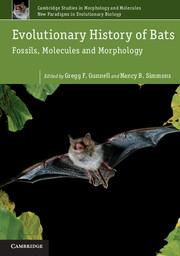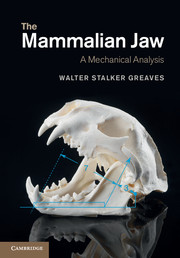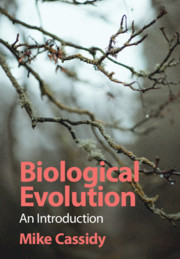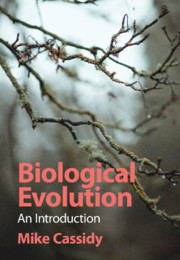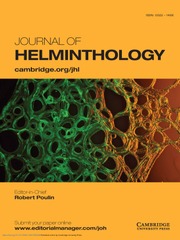Evolutionary History of Bats
Advances in morphological and molecular methods continue to uncover new information on the origin and evolution of bats. Presenting some of the most remarkable discoveries and research involving living and fossil bats, this book explores their evolutionary history from a range of perspectives. Phylogenetic studies based on both molecular and morphological data have established a framework of evolutionary relationships that provides a context for understanding many aspects of bat biology and diversification. In addition to detailed studies of the relationships and diversification of bats, the topics covered include the mechanisms and evolution of powered flight, evolution and enhancement of echolocation, feeding ecology, population genetic structure, ontogeny and growth of facial form, functional morphology and evolution of body size. The book also examines the fossil history of bats from their beginnings over 50 million years ago to their diversification into one of the most globally wide-spread orders of mammals living today.
- Explores the evolutionary history of bats from a range of perspectives, including the fossil record, phylogenetics, genomics and population genetics and ecology
- Examines advances in both morphological and molecular methods to present the latest discoveries and research involving living and fossil bats
- Covers nearly every aspect of bat biology, ecology and evolutionary history to appeal to both students and professionals in the field
Reviews & endorsements
Pre-Publication Review:
"The last decade has seen an amazing confluence of new information on the evolutionary history of bats. Discoveries of fabulous new fossils, advances in molecular and morphological methods for phylogenetic reconstruction, new approaches in biomechanics, and emerging prospects of identifying the genes linked to form and function all converge to make this the most exciting of times in the field of bat evolution. Only a few years ago, the early fossil record of bats was close to non-existent, there was no consensus on Familial (or even sub-Ordinal) relationships among bat groups, and ideas on the deep-time origins of bats and the characteristics (flight and laryngeal echolocation) that make them unique among mammals were largely speculative. This book is timely and exciting – synthesizing new information from all of these areas to give a richer and more detailed picture on the evolutionary history of bats than has ever before been possible."
Gary F. McCracken, University of Tennessee, Knoxville
Pre-Publication Review:
"This is a truly masterful integrative volume on bat evolution, and it will instantly serve as required reading in mammalian evolutionary biology. Drawing on the fossil record, molecular phylogenetics, biogeography, ecomorphology, biomechanics, and developmental biology, the editors and authors have produced the most detailed and up-to-date overview not only of the evolution of bats but of their most striking hallmarks—flight, echolocation, and rich taxonomic and anatomical diversity."
Kristofer M. Helgen, National Museum of Natural History, Smithsonian Institution, Washington, D.C.
Product details
April 2012Paperback
9780521745260
572 pages
246 × 174 × 26 mm
1.13kg
133 b/w illus. 8 colour illus. 26 tables
Available
Table of Contents
- List of contributors
- Preface
- 1. Phylogenies, fossils and functional genes: the evolution of echolocation in bats Emma C. Teeling, Serena Dool and Mark Springer
- 2. Systematics and paleobiogeography of early bats Thierry Smith, Jörg Habersetzer, Nancy B. Simmons and Gregg F. Gunnell
- 3. Shoulder joint and inner ear of Tachypteron franzeni, an emballonurid bat from the middle Eocene of Messel Jörg Habersetzer, Evelyn Schlosser-Sturm, Gerhard Storch and Bernard Sigé
- 4. Evolutionary history of the Neotropical Chiroptera: the fossil record Gary S. Morgan and Nicholas J. Czaplewski
- 5. New Basal Noctilionoid Bats (Mammalia: Chiroptera) from the Oligocene of Subtropical North America Nicholas J. Czaplewski and Gary S. Morgan
- 6. Necromantis Weithofer, 1887, large carnivorous middle and late Eocene bats from the French Quercy Phosphorites: new data and unresolved relationships Suzanne Hand, Bernard Sigé and Elodie Maitre
- 7. African Vespertilionoidea (Chiroptera) and the antiquity of Myotinae Gregg F. Gunnell, Thomas P. Eiting and Elwyn L. Simons
- 8. Evolutionary and ecological correlates of population genetic structure in bats Kevin J. Olival
- 9. A bird? A plane? No, it's a bat: an introduction to the biomechanics of bat flight Sharon M. Swartz, Jose Iriarte-Díaz, Daniel K. Riskin and Kenneth S. Breuer
- 10. Toward an integrative theory on the origin of bat flight Norberto P. Giannini
- 11. Molecular timescale of diversification of feeding strategy and morphology in New World Leaf-Nosed Bats (Phyllostomidae): a phylogenetic perspective Robert J. Baker, Olaf R. P. Bininda-Emonds, Hugo Mantilla-Meluk, Calvin A. Porter and Ronald A. Van Den Bussche
- 12. Why tribosphenic? On variation and constraint in developmental dynamics of chiropteran molars Ivan Horáček and František Špoutil
- 13. Necromantodonty, the primitive condition of lower molars among bats Bernard Sigé, Elodie Maitre and Suzanne Hand
- 14. Echolocation, evo-devo, and the evolution of bat crania Scott C. Pedersen and Douglas W. Timm
- 15. Vertebral fusion in bats: phylogenetic patterns and functional relationships Dawn J. Larkey, Shannon L. Datwyler and Winston C. Lancaster
- 16. Early evolution of body size in bats Norberto P. Giannini, Gregg F. Gunnell, Jörg Habersetzer and Nancy B. Simmons
- Index.

